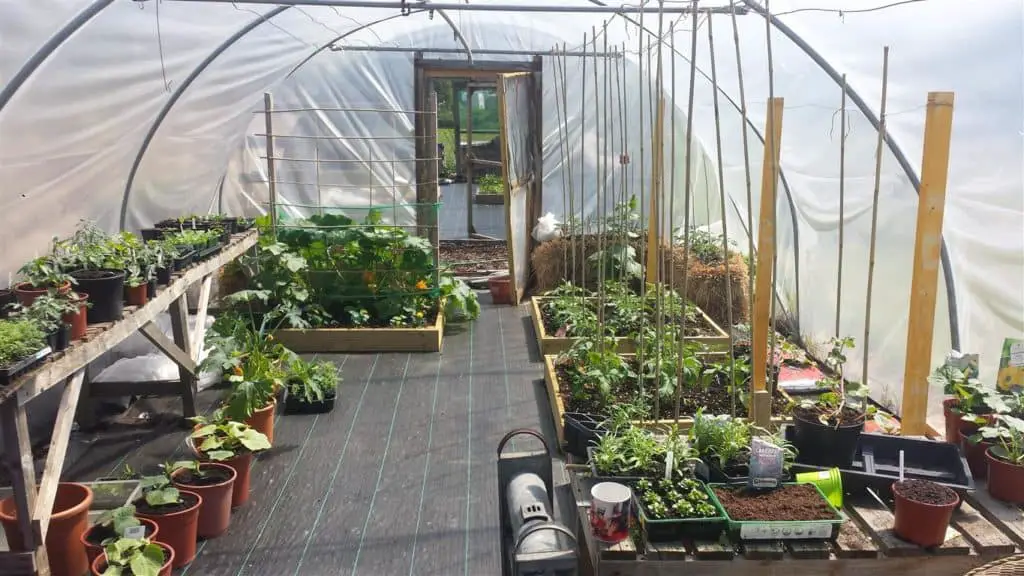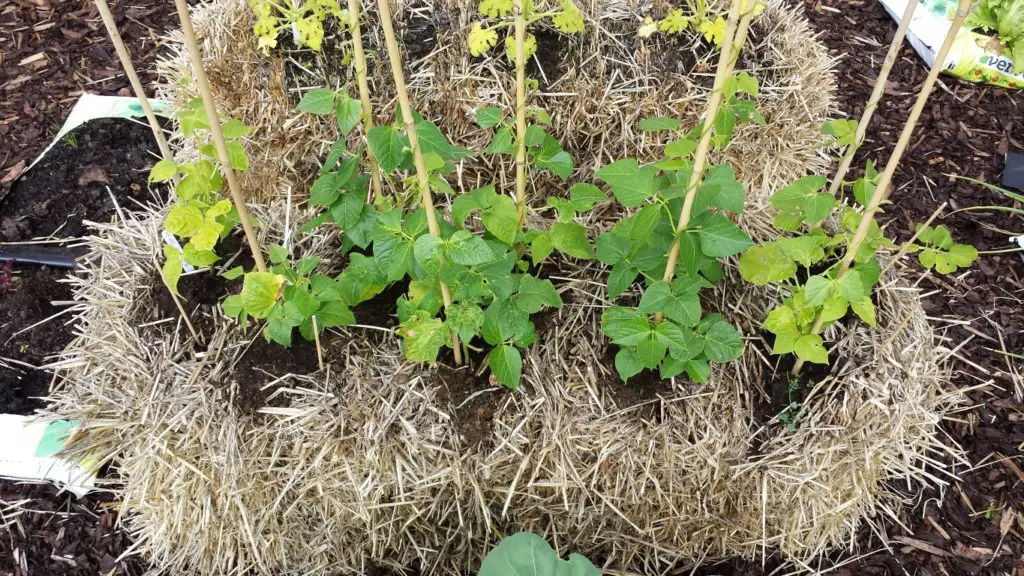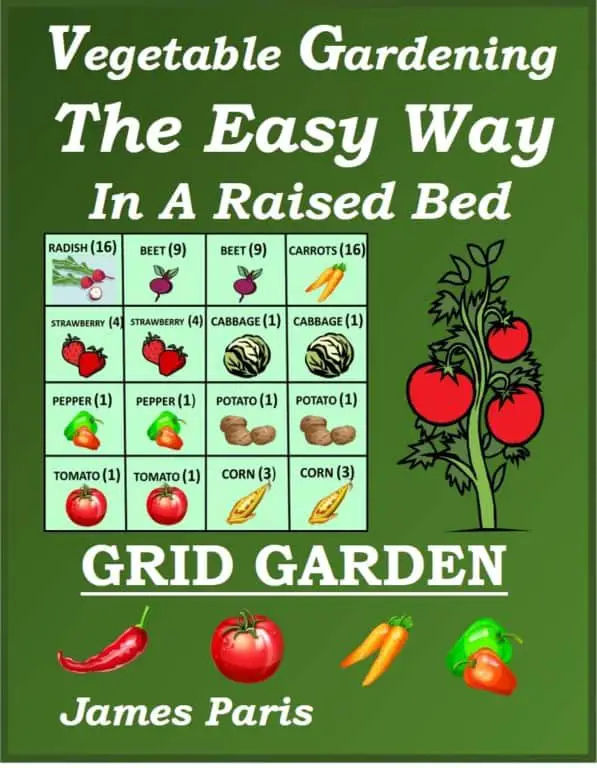No-Dig gardening is called such because it does not involve the usual ‘heavy lifting’ with spade and garden implements that ordinary row gardening methods use
There are many different methods or techniques involved with this no-dig method, and indeed many questions to be asked, but they all have the one thing in common – ease of use, and the possibility of growing – particularly vegetables – in very limited space.
Examples of Easy No-Dig Vegetable Gardening
- Square foot gardening with raised Beds
- Traditional Raised Bed Gardening
- Lasagna or Layer composting gardening method
- Straw bale or Hay bale gardening
- Container gardening methods for vegetables
- Hugelkultur raised bed gardening or Mound gardening
6 Easy ways to grow your own fruit and vegetables
- Square Foot Gardening: This method is one of my own favourites and involves a simple framework 4 foot x 4 foot x 6inches high. This is then split into a 16 square grid, that produces vegetable throughout the year. This method can also be used in a traditional raised garden bed of any size.
- Raised Bed Garden: This is a Raised wooden frame usually rectangular in shape. For instance 9 foot long by 4 foot wide. The height can be anything from 6 inches to 24 inches high. This is an excellent depth for growing root vegetables such as carrot or parsnip.
- Lasagna Gardening: Also called Layer Composting. As the title suggests, this method is a type of layer composting that includes waste cardboard and organic waste material as a growing compound. This is an excellent way to recycle old cardboard waste and kitchen cuttings to grow many kinds of shallow rooted vegetables, no matter what the surrounding soil conditions.
- Straw Bale Gardening: This method has ‘taken root’ lately as a unique way to produce vegetables from otherwise sterile straw bales. The process to condition the bale can be quite labour-intensive, but the results can be fairly spectacular – if you follow the instructions! Be aware that straw is different from Hay, and although both can be used to grow veggies, they have a different preparation process.
- Container Gardens: This is perhaps the best known of all the no-dig gardening methods, as almost everyone has a window-sill to put a pot on. This method is particularly good for growing things like tomatoes and peppers, but is capable of much more!
- Hugelkultur Raised Bed: This method involves building a heap of old timbers and creating a self-irrigating bed that will produce vegetables for upwards of 10 years plus. Ideal for forested areas with little in the way of fertile land for growing vegetables. If you have an abundance of old timbers or forest waste to hand, then this could be the ideal growing method for you!
How To Do No-Dig Gardening

First of all, it is a general misconception that no-dig gardening means that there is no work involved, and the vegetables plant and grow themselves!
Whilst it is true that this method is much easier to do than traditional vegetable gardening techniques. The fact remains that there is still an element of work to do in order to get the best out of your veggie garden.
The first step as always is to consider the most important elements that will suit yourself – and your vegetables.
Here is a list of some things to consider before you choose your no-dig gardening method…

- Location: How much space do you have to grow in? If you have a small backyard then a 4 x 4 Square Foot Garden might be your best choice. A larger space may mean that a traditional Raised Bed may suit you better.
- Location again: Most every plant needs a certain amount of sunshine to prosper (usually 6 hours per day plus), as well as nutrients and water. Consider your area and where exactly would suit your plants needs.
- Material Supply: What will you do for compost? If you have plenty space and access to fallen timbers for instance, then maybe a Hugelkultur or hugelbed garden
 would be an ideal choice for you.
would be an ideal choice for you. - Your own needs: What do you intend to grow? If you like root vegetables, then a deep bed such as the Raised Bed example above would maybe suit you better than a Lasagna garden method. However shallow rooted vegetables such as beetroot or cabbage, would suit just about any of these techniques
- Climate: This is mega-important as it is no use trying to grow vegetables in an area that is just not right for them. The best test for this is a quick conversation with your neighbours to find out what grows well in your climate.
The Benefits of No-Dig or No-Till Gardening:
No Dig gardening has many benefits over traditional row gardening methods – and not just for the beginner. As the pressure to grow more in less space and at less cost increases, then so does the interest in no-till gardening methods such as these listed above.
Here is a list of just some of the benefits to be gained from no-dig vegetable gardening.
- No deep digging involved, so no back-breaking work.
- Little or no weeding involved.
- Easy to service and maintain with minimal equipment.
- Organic gardening method that involves no chemical fertilisers.
- Better crop yields thans to the nutrient rich compost or growing medium.
- Better drainage leading to friable compost that encourages root growth.
- Easier harvesting whether with deep rooted vegetables or shallow rooted owing to the light compost mix.
Conclusion:
Not everyone has the luxury of a huge yard or field in which to grow their vegetables. Indeed with the No-Dig method, most of the space is really not needed!
With the methods described above, almost anyone can grow their own healthy chemical-free vegetables throughout the growing season – and beyond, if you use a Polytunnel or greenhouse.
Check out the links above that will take you to on-site articles on the different techniques, or indeed to our own books on the subject covered on our Amazon Author Page

